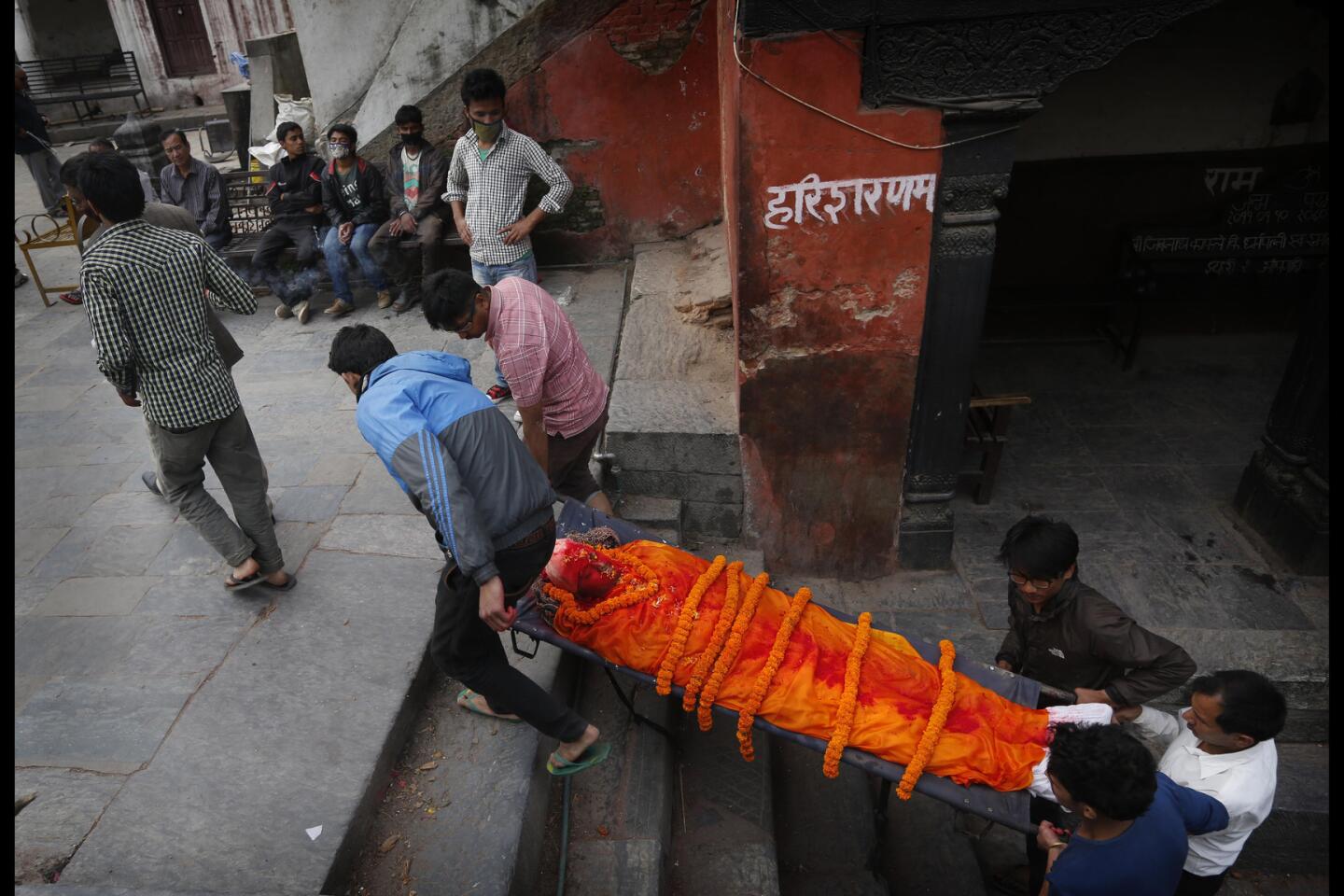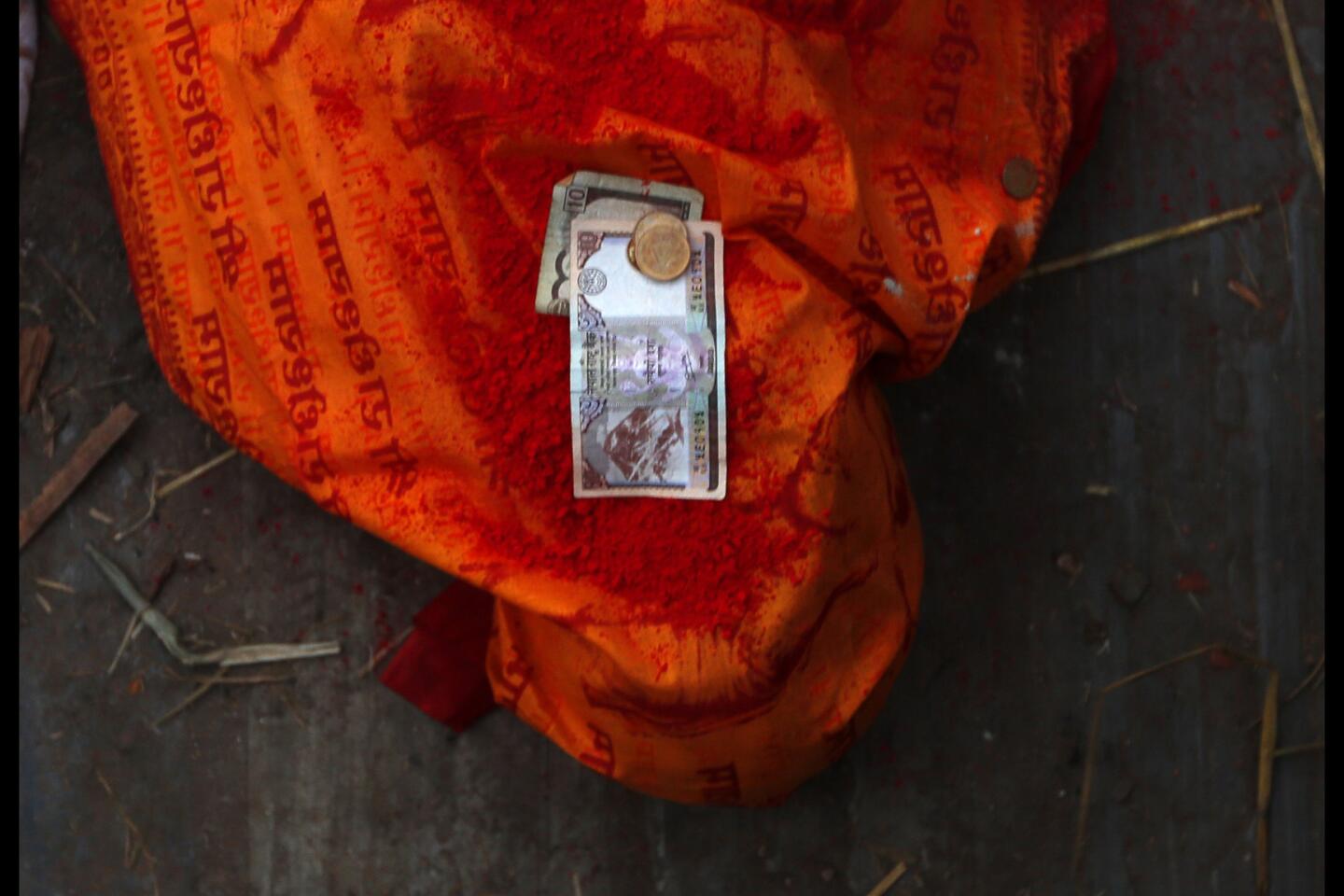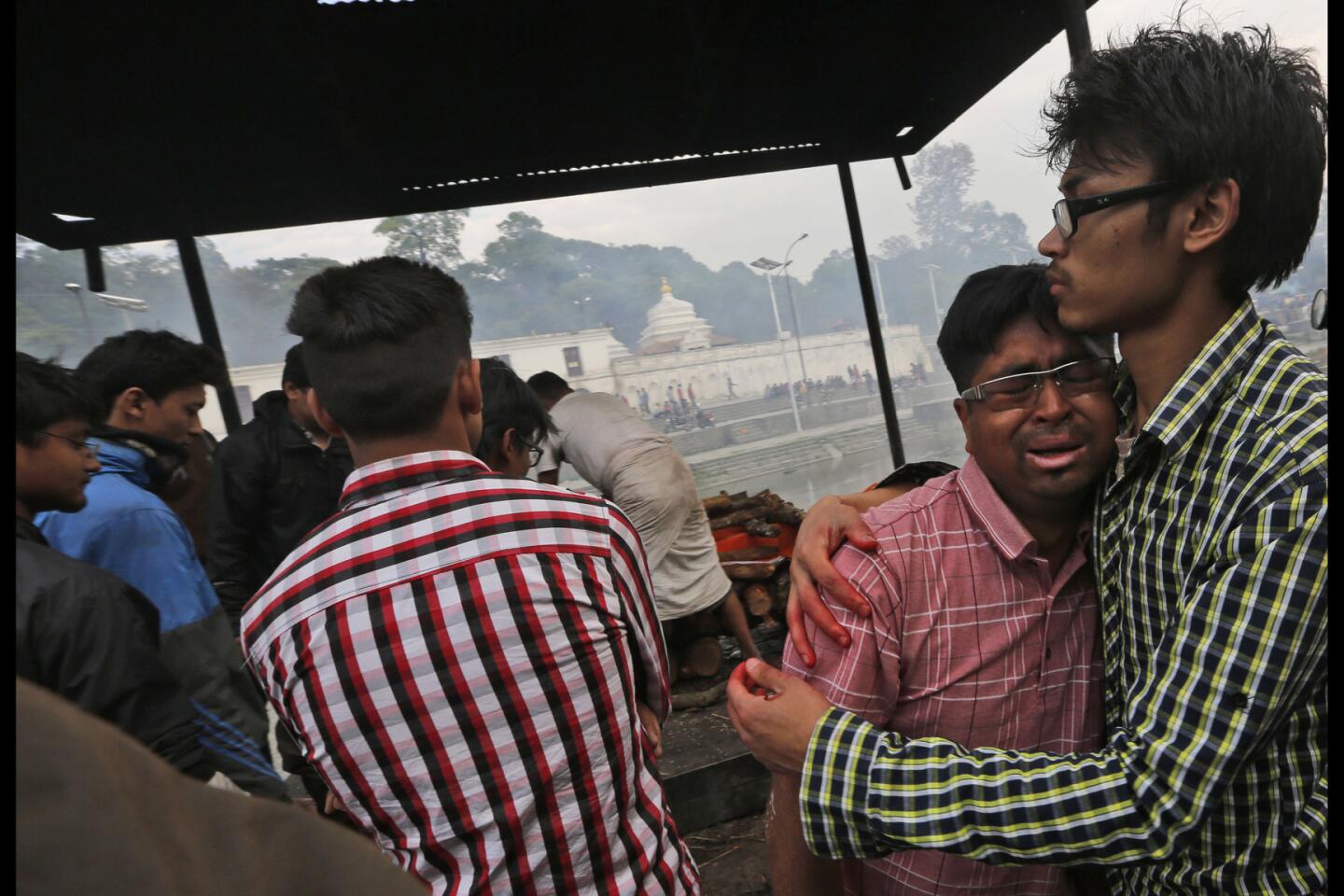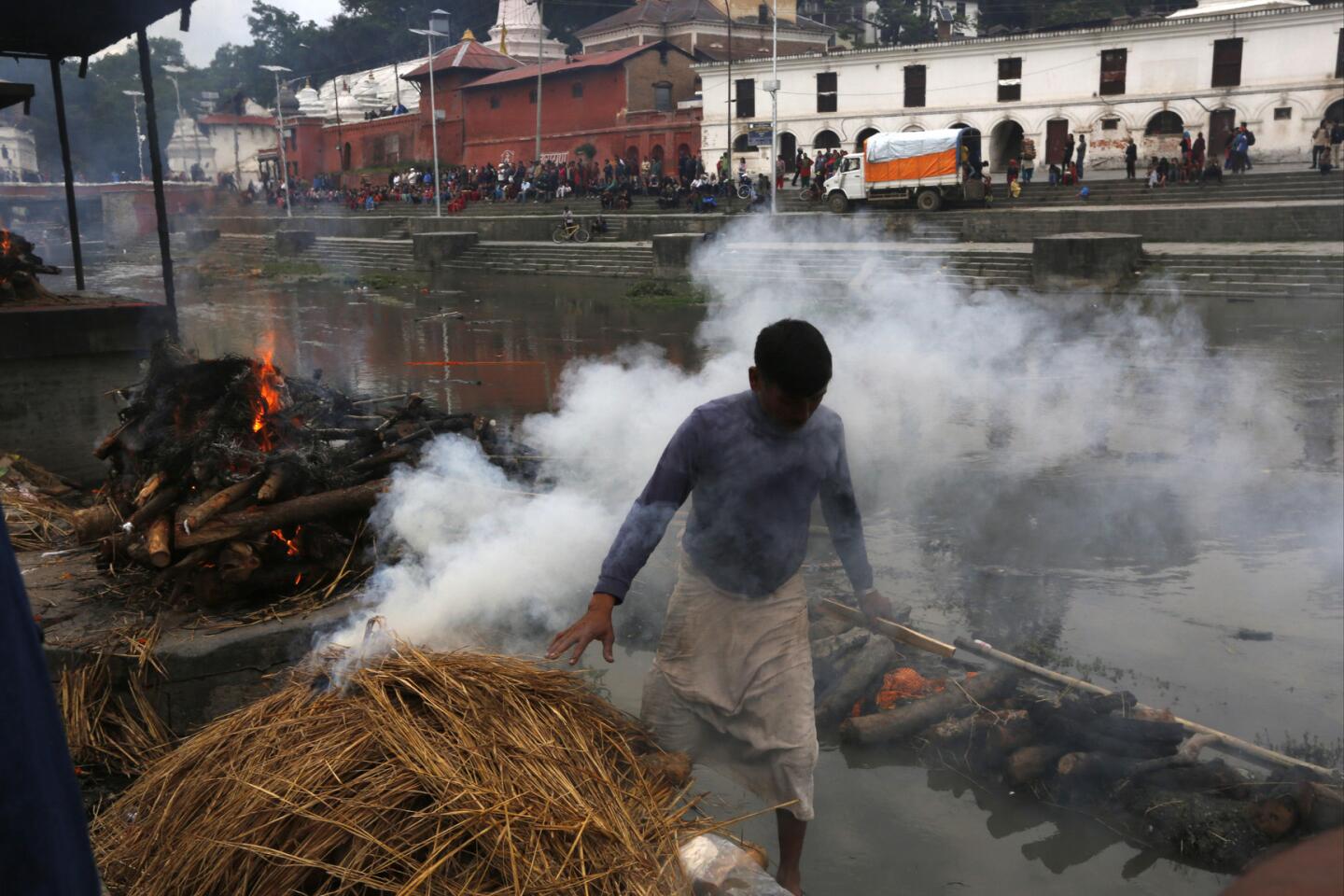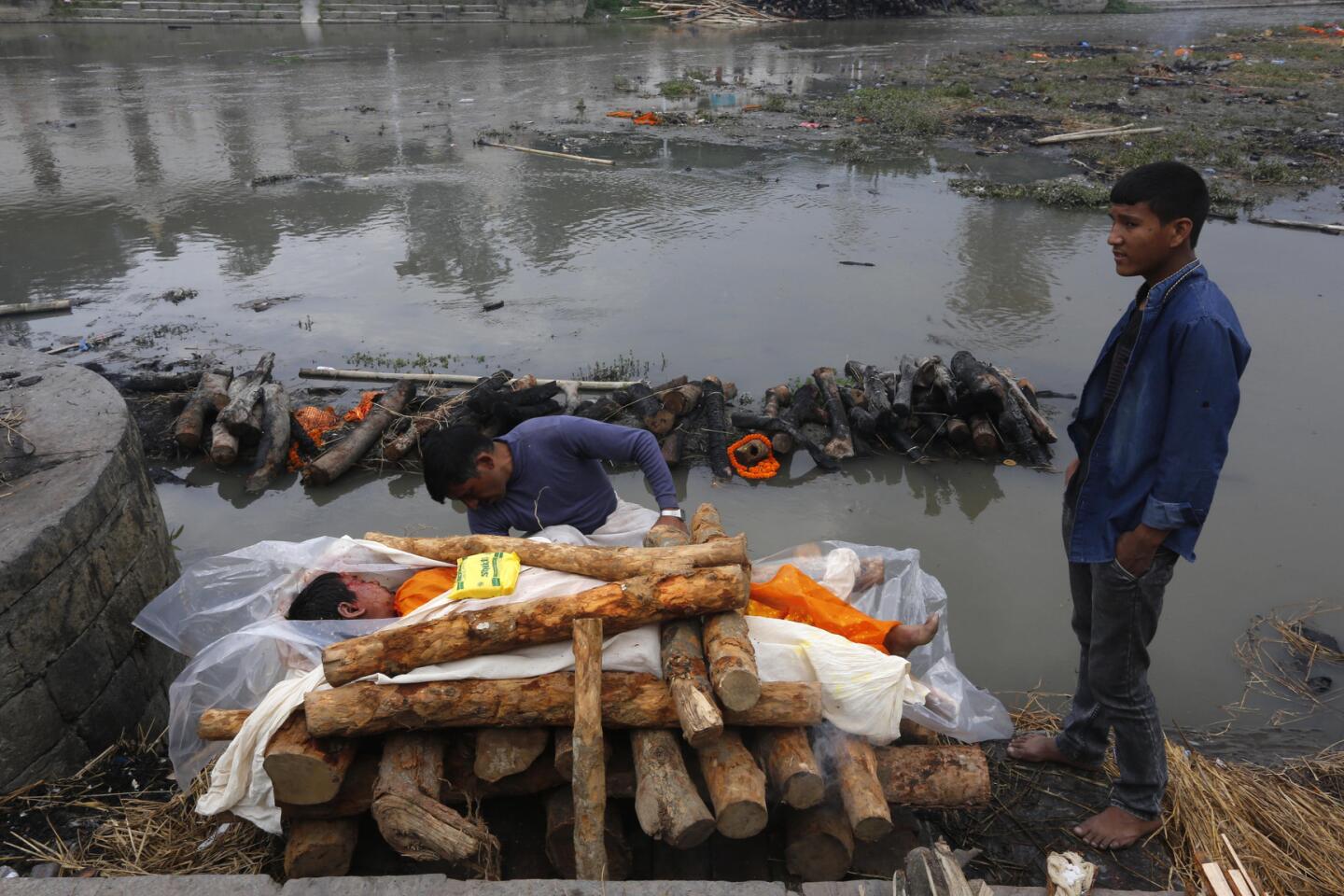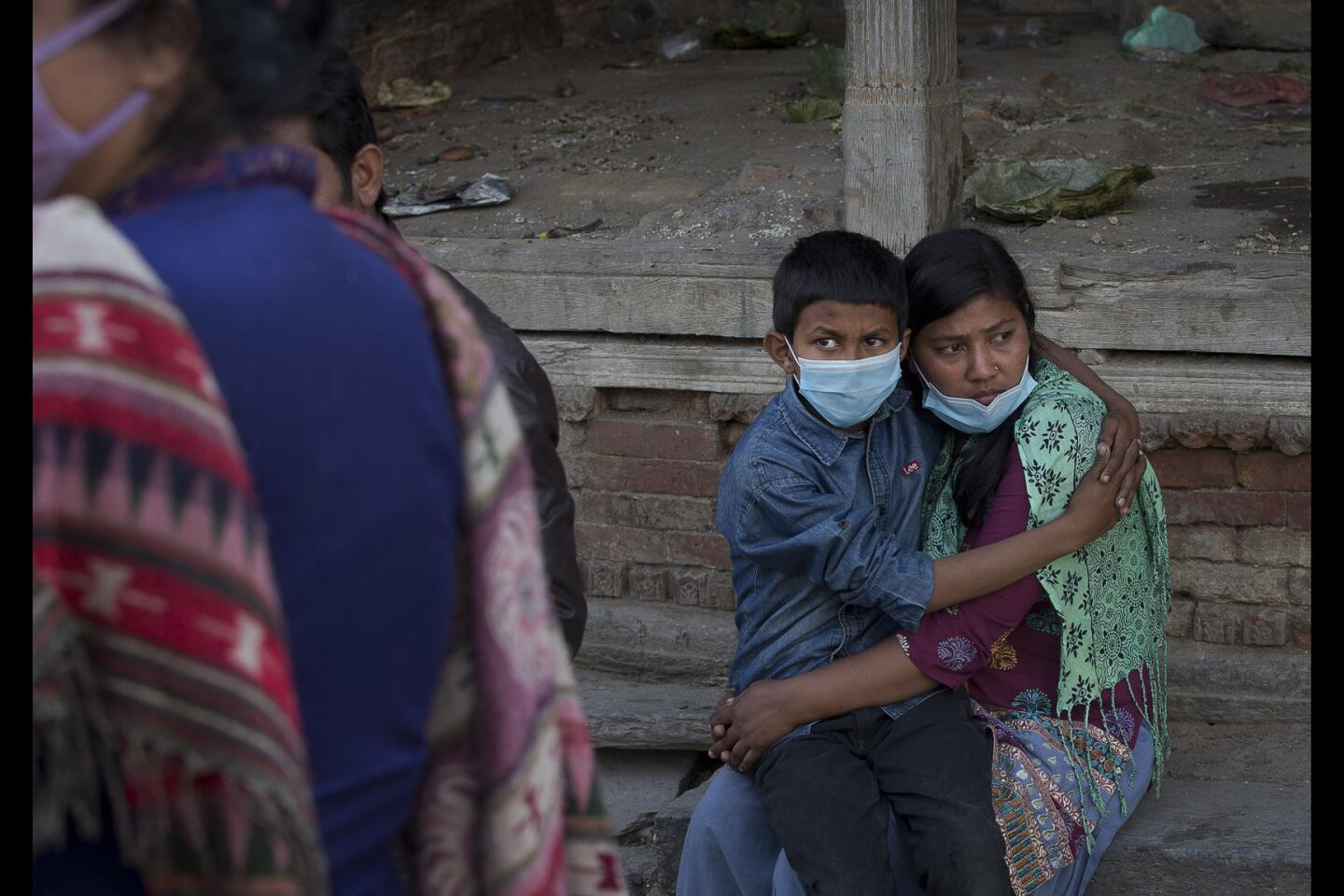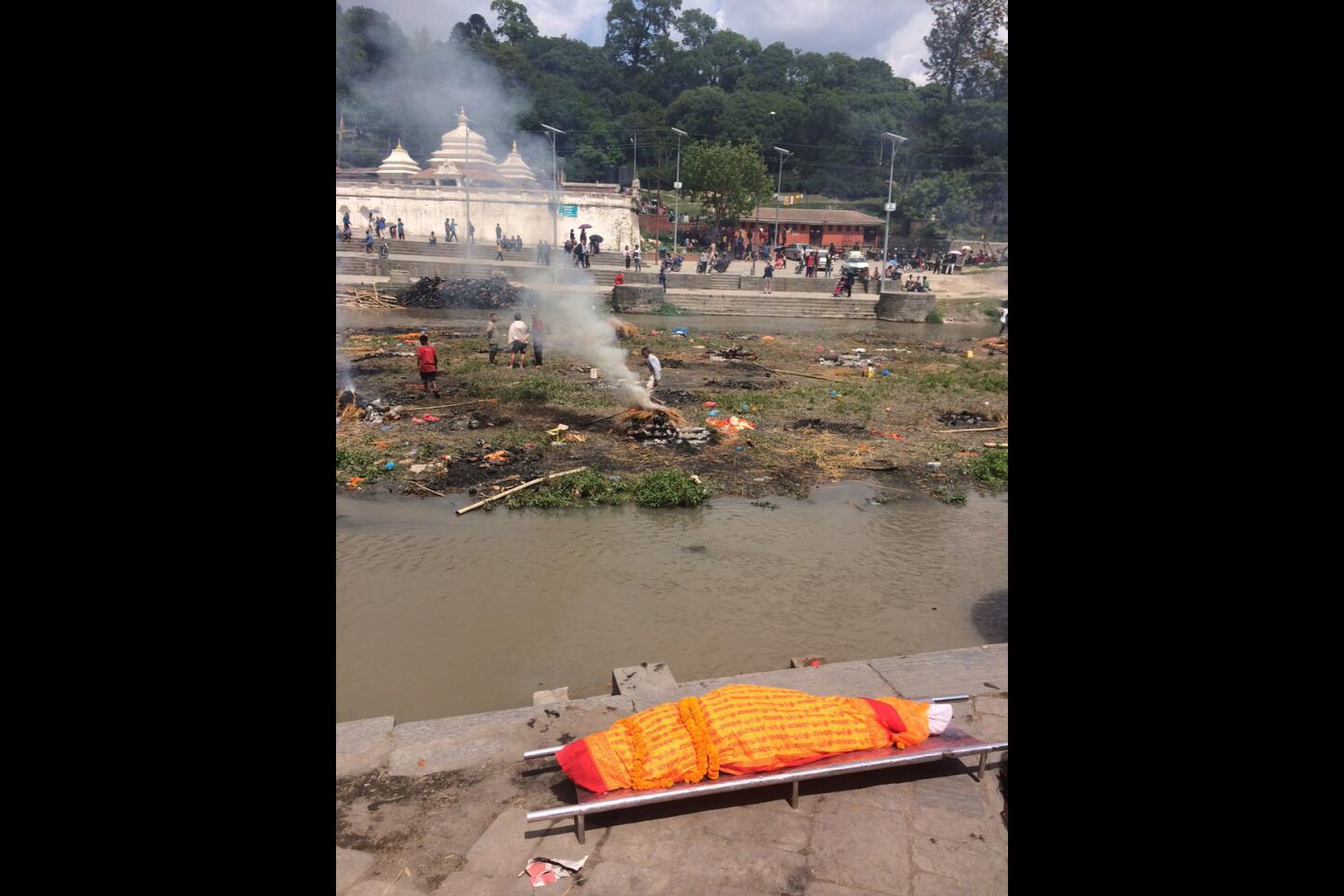Great Read: After Nepal quake, river burns with Hindu funeral pyres almost around the clock
- Share via
Reporting from Katmandu, Nepal — The family of Usha Shrestha gathered along the banks of the Bagmati River on Monday to bear her body down to the funeral pyres.
They carried her on a stretcher fashioned from green bamboo, her body wrapped in a lavender flowered sheet, a red-and-gold sari and a marigold cloth written with God’s name.
They dusted her with red powder and placed small, crumpled bills atop her chest. They laid her jewelry over her heart, roughly two days after it stopped beating.
A professional body burner stacked logs of sal wood, a teak-like timber, onto a small platform and laid packets of ghee, a clarified butter, amid the timbers to ensure the flames would take light. One by one, her three sons prostrated themselves at her feet, their weeping uncontained by the surgical masks stretched across their faces.
Then the eldest son performed the ultimate filial duty, laying a flaming stick upon his mother’s lips.
As the flames spread across her chest, the body burner heaped straw atop her corpse, sending bluish smoke billowing into the sky over the white stupas of the Pashupatinath temple.
Since Saturday evening, when the 45-year-old widow was crushed in her home by Nepal’s massive 7.8 earthquake, Hindu funeral pyres have been burning here almost around the clock. As of mid-Monday, nearly 300 bodies had been cremated, authorities at the temple said, more than six times the normal rate of roughly 15 to 20 per day.
But these solemn ceremonies represent only a fraction of the disaster’s victims: About 800 people have died in Katmandu alone, officials said Monday.
The demand for funerary services at Pashupatinath has become so intense that its 11 stone platforms had become oversubscribed. By Monday afternoon, burners were working in the muddy flats, tending to dozens of pyres among the soggy reeds in the river.
Rugged 4x4 military vehicles outfitted as hearses arrived with depressing frequency. Trucks stacked with kindling were backed up to the waterside, spooking monkeys who had stopped to drink from the grayish flow.
As the afternoon wore on, the sun slipped behind clouds and smoke filled the air. A gray military helicopter, perhaps on an aid mission, shuddered overhead.
Wives and daughters wailed along the riverside. “Daddy!” one called out with a piercing intensity as young men milled about, stone-faced.
Khadka Adhikari, 55, has been burning bodies at Pashupatinath for 30 years. Normally, he said, he tends to one or two families a day. Since Saturday, however, he’s performed five or six burnings regularly.
“It is very busy these days,” he said, squatting by the embers of Shrestha’s pyre and counting his daily earnings as he smoked a cigarette.
Burners such as Adhikari earn about $10 per corpse, a decent sum, although the work is hard. The sal logs must be hauled atop the platform and properly stacked into a rectangle several tiers high, the fire tended and stoked until the body is reduced to ash.
Besides fees for the burners, families must also pay for the wood, and a fee for the pyre space. After that, there are add-ons such as pallbearers to carry the stretcher down to the waterside. The cost can add up to about $50.
Once the corpse is cremated, the charred timber and ash are pushed into the Bagmati. Then the platform is washed clean, and another body is prepared in its place.
Ideally, the dead are cremated on the day of death or the day after. But like many Nepalese men, Shrestha’s sons were working overseas and had to fly home for her funeral, so her rites were delayed until Monday.
Adhikari, a father of four, said he hasn’t been this busy in nearly three decades. The last time he saw this many bodies was in 1988, when scores were killed in a stampede at a stadium here.
But after three decades attending to Katmandu’s departed, Adhikari said he must keep himself at a certain remove, no matter how great the tragedy or injustice.
“In the beginning, it was very emotional for me, burning bodies,” he said. “But now, it’s just like any other job.”
More to Read
Sign up for Essential California
The most important California stories and recommendations in your inbox every morning.
You may occasionally receive promotional content from the Los Angeles Times.
